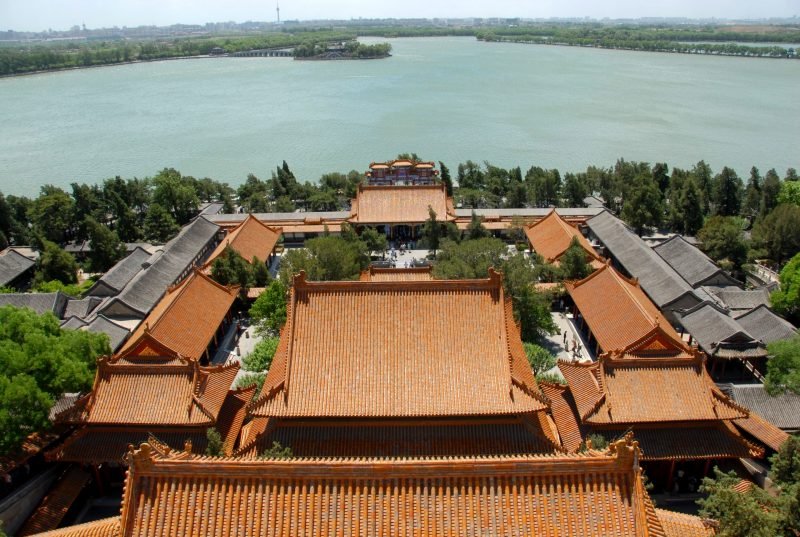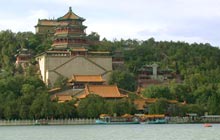
 History
History
The history of the gardens at the New Summer Palace date back to the Mongol Emperor Kublai Khan; to improve Beijing's water supply, he ordered the construction of canals transporting water from the Western Hills to an enlarged lake, now known as the Summer Palace's Kunming Lake. Five hundred years later, Emperor Qianlong (r. 1736 – 1756) added lake-side gardens and a Temple for Gratitude and Longevity in honour of his mother's birthday.
It was not before 1875 however, that the New Summer Palace, in its current form, began to take shape. In an effort to curry favour with the Dowager Empress Cixi, her brother in law, after being appointed head of the navy, used money earmarked for new warships to build her a New Summer Palace. The Empress Dowager was thrilled by her present. The Chinese navy, on the other hand, was routed by a smaller Japanese fleet in the Sino-Japanese war of 1895.
Historical Significance
The Empress Dowager, who abhorred all challenges to her position, moved her administration to the New Summer Palace in 1889. Tales of her excesses are legion. The kitchens comprised eight courtyards, there were 128 eunuch cooks employed in her palace, five million silver taels were spent on her sixtieth birthday party, etc. And certainly when you consider that all 290 hectares of the summer palace were for the Dowager's exclusive use, you begin to see how the New Summer Palace came to symbolize the decadence of a venal dynasty.
The name, "The New Summer Palace", by definition draws the question – what happened to the old one? This was demolished in 1860 by Anglo-French forces. And as if once were not enough, the allied powers returned in 1900 to raze the newly reconstructed New Summer Palace. In this way the Summer Palaces – new and old – are also associated in popular culture with the destructive interference of foreigners on their land.
Neo-Daoist Ideal of Natural Harmony
The Summer Palace's enchanting lake-side scenery is not at all coincidental. It has been composed with as much care as a poem. The elliptical marble bridge leads the eye to the rocky South island in the middle of the lake, the wooden pavilions dotted sparingly on the gentle hills that adorn the lakeside, the grandiose temples that climb the artificially created Longevity Hill – all these represent a quintessentially Chinese ideal of harmony between man and nature. Enjoy the poem.